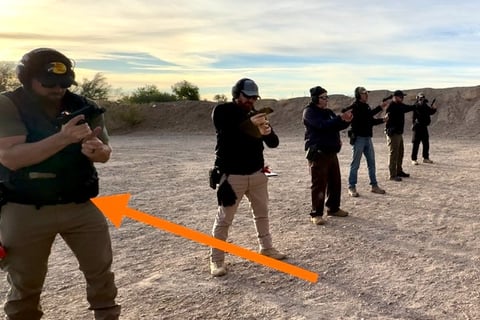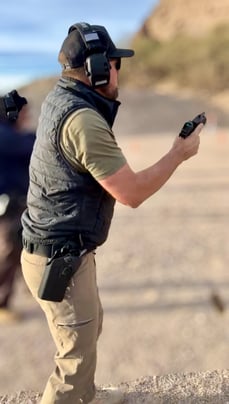🚨 TRAIN WITH OPTIONS, NOT JUST “THE WAY”! 🚨
When it comes to handling malfunctions, flexibility is key, but Immediate Action (IA) is emergent. We don't just teach one method—we explore options so you can adapt to the situation. Why? Because one size doesn’t fit all. Let’s break it down with an example:
🔥 The Situation:
Your pistol fails to go into battery. You pull the trigger and it feels squishy. Your training kicks in, and you know what's off. Time to fix it—fast and smart. This will cover most Failure to Eject (Type 2) malfunctions and Double Feed (Type 3) malfunctions.
Here Are Your Options:
1️⃣ Step, Clear, Stow, Reload, Fire
Step off the X (large step left or right).
Remove the magazine, stow it (e.g., under your Gun Hand Arm).
Rack the slide 2–3 times to clear the chamber.
Reinsert with the stowed mag, rack the slide, and fire.
2️⃣ Step, Drop, Reload Same Mag, Fire
Step off the X.
Remove the magazine completely. Fully clearing the mag well for any contents to drop from.
Reinsert the same mag, rack the slide, and fire.
⚡ Quicker than Option 1?
3️⃣ Step, Drop, New Mag, Fire
Step off the X.
Toss the mag, grab a fresh one, rack the slide, and fire.
Great for high-stress or tactical situations, but are you okay tossing the rounds from that mag?
Thoughts on Choosing an Option:
Option #2: Super fast and works great. That mag never leaves your hand, only the mag well for a micro second.
Option #3: Better if you suspect mag failure, but consider your ammo count—do you have enough to spare?
If Option #2 fails again, immediately go for option #3, dump that mag and go for a fresh one.
🎯 Lesson Learned:
There’s no universal “best” way to clear the Failure to Eject or Double Feed Malfunctions but we constantly train to provide options. The right option depends on the context: your mag, ammo, and the fight you’re in and how quick you are. That’s why we train with flexibility, testing multiple methods to build a mental toolbelt for every scenario. Be sure you're taking Immediate Action (IA) in a malfunction scenario and that you train to perform the correct action because you know and feel the type of malfunction in your hands.
Failure to Eject Malfunction Drill
NEW DRILLS = NEW CHALLENGES
When trying something new, it’s normal to fumble—it’s part of the learning process. Take Mike, for example. He’s in the middle of a type 2 malfunction drill and debating:
Option #3: Toss the mag in the dirt?
Option #2: Stick with the familiar, releasing the magazine completely and reinserting it back in with a single rack of the slide
Caught in hesitation, he fumbles and ends up defaulting to Option #3, which he had just learned seconds ago. It wasn’t perfect, but guess what? That’s OKAY because it still worked and his IA had him back up on target quickly.
🔥 Training is where you’re meant to fail.
This is where you work out the kinks.
This is where hesitation becomes muscle memory.
This is where you learn what works for YOU.
Every misstep in training builds confidence in the field. Keep pushing, keep failing, keep improving. The only failure is not showing up. 👊
TriggerTime.Click. 🚀 Train smart. Adapt faster.



